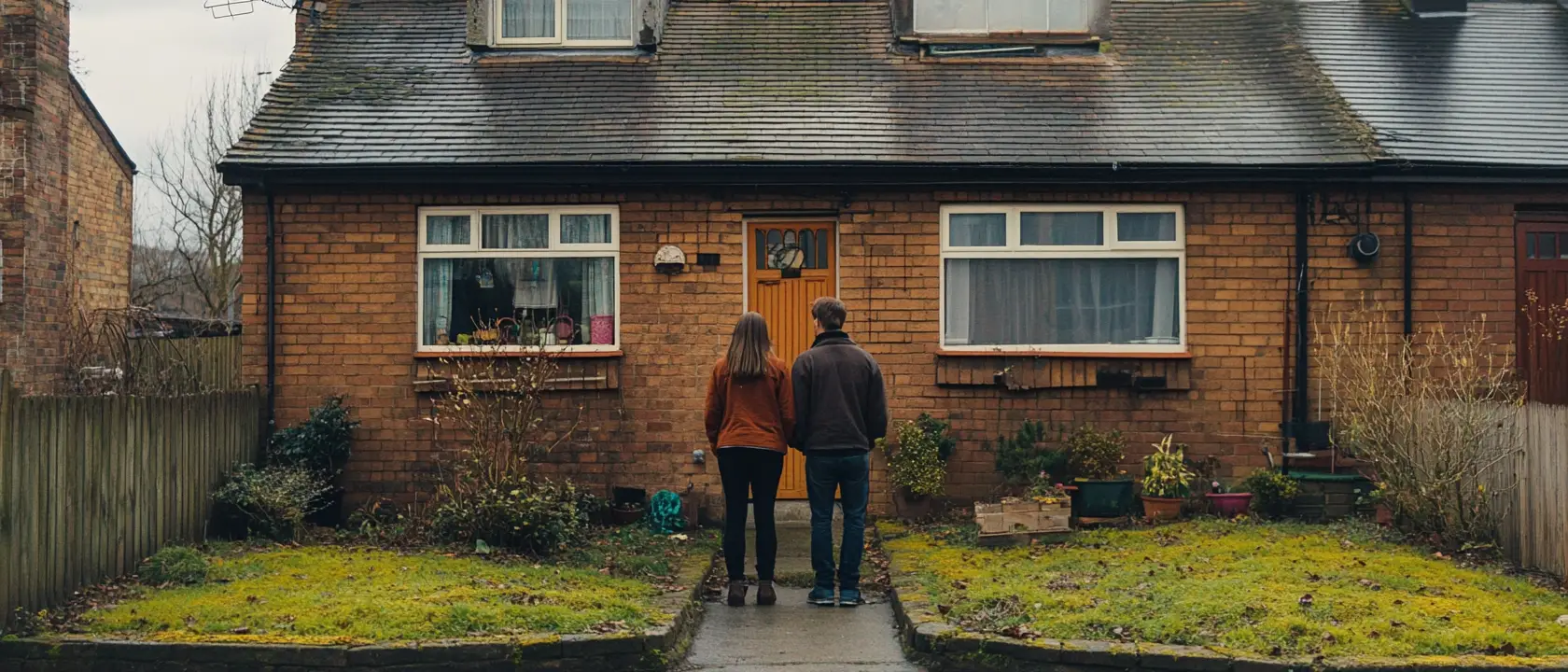Separation or divorce can be a challenging time, especially when it comes to dividing assets and navigating the financial complexities of homeownership. If you and your partner owned a home together, one common outcome is for one party to buy out the other’s share. This allows you to retain ownership of the property and avoid the need to sell the home outright.
However, buying out a partner involves a number of steps, including negotiating the value, securing the right mortgage, and addressing legal requirements. In this guide, we’ll walk you through the top 3 tips for successfully buying out a partner and provide key mortgage advice.
1. Get a Professional Valuation of the Property
Before you can begin the process of buying out your partner’s share of the property, you need to establish its current market value. Agreeing on the property’s value is crucial, as this will determine the amount of equity you will need to pay your partner.
Steps to Take:
- Hire a Chartered Surveyor: A professional valuation by a chartered surveyor offers an impartial assessment of the property’s worth, which can help avoid disputes.
- Consider Multiple Valuations: If there is any disagreement over the valuation, it can be helpful to get valuations from several estate agents to establish a fair average.
- Calculate Your Partner’s Share: The buyout amount is usually based on the agreed property value minus any outstanding mortgage balance, divided according to the ownership split. For instance, if the property is worth £300,000, with £100,000 left on the mortgage and ownership split 50/50, you’ll need to raise £100,000 to buy out your partner’s share.
Tip: Include Assets and Debts in Discussions
It’s essential to consider any other assets or debts shared between you, as this might affect the buyout arrangement. For example, one party might agree to take on a higher share of debts in exchange for a reduced buyout amount.

2. Review Your Mortgage Options
Once you’ve agreed on the buyout figure, the next step is to secure financing. Unless you have significant savings to fund the buyout, you’ll need to arrange a new mortgage or refinance your existing mortgage to cover your partner’s share.
Considerations for Your Mortgage:
Check if You Can Afford the Mortgage Solo: The most important factor is whether you can take on the mortgage independently. Lenders will assess your income, outgoings, and credit history to determine if you can afford the payments.
Remortgaging: You may need to remortgage to release enough equity to buy out your partner. This means paying off the existing mortgage and taking out a new one, which may come with additional fees such as early repayment charges (if you’re in a fixed-rate period) or arrangement fees for the new mortgage.
Seek Mortgage Advice: It’s highly recommended to work with a mortgage broker, especially if your situation is complex. They can help you find the best deal based on your financial situation and ensure the remortgage or new mortgage is affordable in the long term.
Consider a Mortgage Guarantor: If your income alone isn’t enough to secure the required mortgage, you may need to consider having a family member act as a guarantor, which can increase your borrowing capacity.
Tip: Budget for Additional Costs
When buying out a partner, remember to account for additional costs such as:
- Stamp Duty Land Tax (SDLT): In the UK, if the amount you are paying to buy out your partner exceeds £250,000, you may need to pay SDLT on the transaction. However, special rules apply for transfers following divorce or separation, so it’s important to consult a solicitor.
- Legal Fees: You’ll need a solicitor to handle the transfer of ownership, which will incur legal fees.

3. Finalise Legal Agreements
The final step in buying out your partner is to formalise the transfer of ownership through legal channels. This involves adjusting the title deeds and ensuring all financial arrangements are clearly documented. A solicitor will help manage this process and ensure everything is legally binding.
Legal Steps to Take:
Transfer of Equity: You’ll need to arrange for the transfer of equity from joint ownership to sole ownership. This means your partner’s name is removed from the title deeds, and you become the sole owner.
Consent from Your Mortgage Lender: If you’re keeping your existing mortgage, the lender must consent to the change in ownership. They’ll want to ensure that you can meet the mortgage payments alone, and may carry out an affordability assessment.
Clean Break Agreement: It’s important to have a legally binding financial agreement that ensures no further financial claims can be made by either party. This is known as a ‘clean break’ order, which is typically granted by the court and is essential for protecting your future financial security.
Tip: Work with a Family Law Solicitor
Divorce and separation can complicate property arrangements, so it’s advisable to work with a family law solicitor who can ensure the process is smooth and all agreements are legally sound.
Final Thoughts: Ensuring a Smooth Buyout Process
Buying out a partner after a separation or divorce can be emotionally and financially challenging, but by taking a methodical approach, you can ensure the process is handled smoothly. Start with a professional property valuation, explore your mortgage options carefully, and work closely with legal professionals to finalise the ownership transfer.
Key Takeaways:
- Make sure you agree on an accurate property value to avoid disputes.
- Seek expert mortgage advice to secure the best deal and ensure you can afford the property on your own.
- Finalise all legal agreements to protect your financial interests going forward.
By following these steps, you can navigate the complexities of buying out a partner and continue building your life in a home that’s now fully yours.
FAQ: Buying Out a Partner After Separation
Q1: How do I calculate the amount I need to buy out my partner?
You need to agree on the property’s current market value, subtract the remaining mortgage balance, and then divide the remaining equity based on your ownership share. The amount you pay will be your partner’s share of this equity.
Q2: Do I need to remortgage to buy out my partner?
In most cases, yes. You’ll likely need to remortgage to release enough funds to buy out your partner. This may involve switching to a new mortgage deal or refinancing your existing mortgage.
Q3: What if I can’t afford to buy out my partner on my own?
If your income isn’t enough to secure the necessary mortgage, you could explore options such as using a guarantor mortgage, where a family member guarantees the loan, or look into whether the property should be sold instead.
Q4: Do I need to pay Stamp Duty on a buyout?
In most cases, Stamp Duty isn’t payable when buying out a partner as part of a divorce or separation. However, if the buyout amount exceeds the Stamp Duty threshold, consult a solicitor to clarify your tax obligations.
Q5: Do I need a solicitor to handle the buyout?
Yes, a solicitor is required to manage the legal transfer of the property’s ownership and handle any changes to the mortgage. They’ll also ensure that all legal aspects of the buyout are properly documented.





